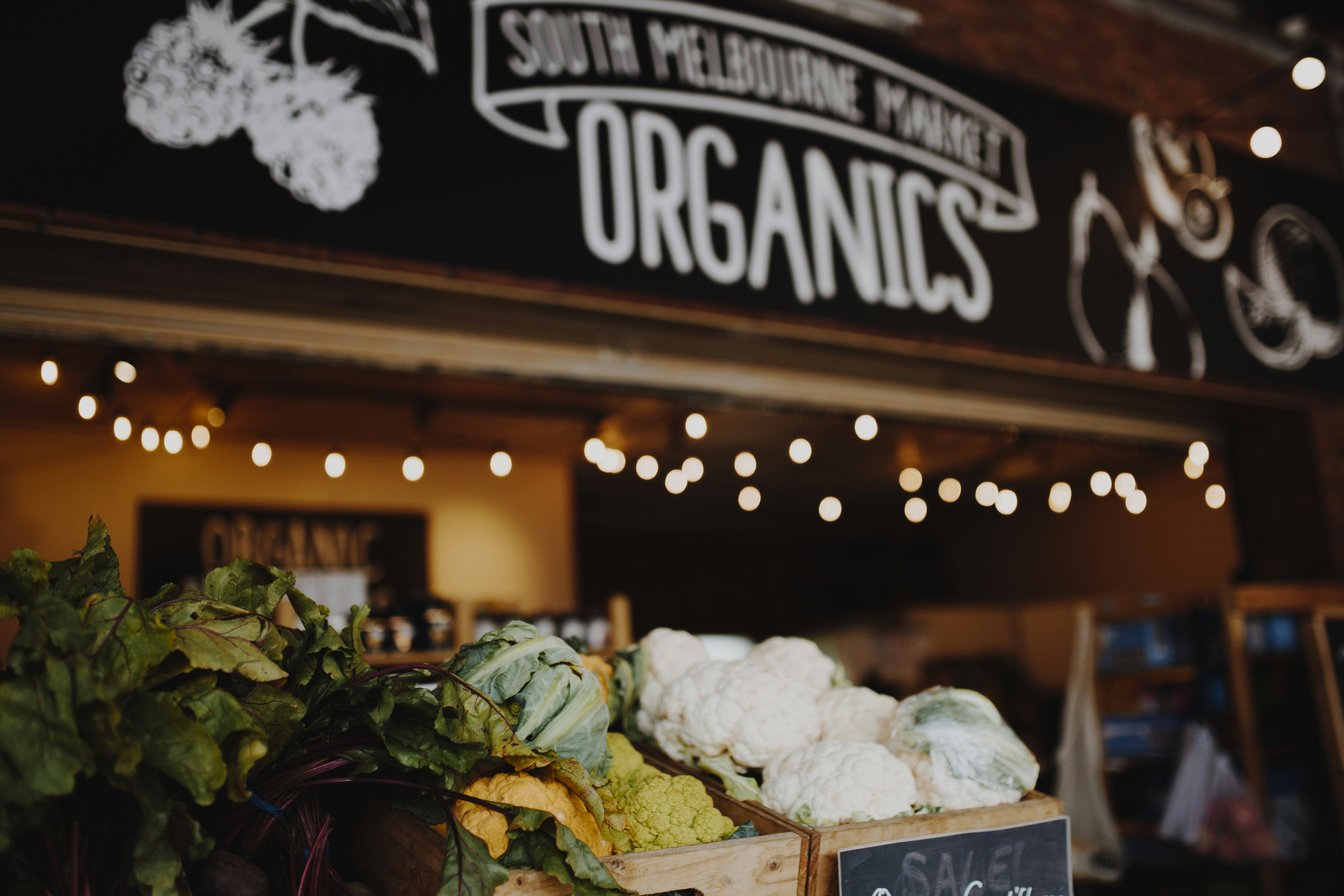Understanding Organic Farming Principles
Organic farming is grounded in a set of principles that prioritize sustainability, biodiversity, and soil health. These principles guide agricultural practices and impact overall ecosystem health. Sustainability in organic farming means that the farming methods are designed to maintain ecological balance while ensuring the long-term productivity of the land. This approach minimizes the negative impacts of farming practices on the environment, thus supporting the conservation of resources for future generations.
Biodiversity is another vital component of organic farming. By promoting a diverse range of crops and supporting natural ecosystems, organic farming increases resilience against pests and diseases. It also encourages a habitat for a variety of organisms, from beneficial insects to earthworms, all of which contribute to a healthy soil ecosystem. Organic farmers strive to build systems that are not dependent on synthetic inputs, which can harm these vital organisms, thereby reflecting a commitment to a more holistic approach to agriculture.
Soil health is considered the foundation of organic farming. Practices such as crop rotation, cover cropping, and the use of organic fertilizers help enhance soil structure and fertility. Healthy soil is essential as it supports plant growth and improves water retention, reducing the need for irrigation. Furthermore, organic certification in Australia mandates adherence to strict guidelines which govern the use of fertilizers and pest control, ensuring that all practices conform to the principles of organic farming.
The differences between organic and conventional farming extend beyond the use of chemicals. Organic practices are guided by ethical considerations aimed at fostering animal welfare and reducing pollution. These commitments resonate with consumers increasingly interested in where their food comes from and how it is produced. In summary, understanding the foundational principles of organic farming is essential for appreciating its role in fostering sustainable agricultural practices in Australia.
Choosing the Right Crops and Livestock
Selecting the appropriate crops and livestock is a fundamental aspect of successful organic farming in Australia. The diverse climate and varying soil types across the continent necessitate a strategic approach to crop and livestock selection. Understanding local conditions, such as climate zones, rainfall patterns, and temperature variations, is crucial for achieving productive and sustainable farming outcomes.
Soil health plays a significant role in determining which crops will thrive. Conducting soil tests can provide valuable insights into nutrient levels, pH balance, and organic matter content. By analyzing these elements, farmers can select crops that are well-adapted to their specific soil types, whether they are sandy, clay, or loamy soils. Additionally, the practice of crop rotation is vital as it contributes to soil fertility, pest control, and disease prevention. Implementing a thoughtfully planned crop rotation system helps enhance soil structure and reduces the buildup of pathogens.
Market demand is another critical factor influencing crop and livestock selection. Before planting, farmers should research trends and consumer preferences in their local markets. Crops with a high demand often include organic fruits and vegetables, while livestock choices may focus on heritage breeds that are well-suited for organic conditions. Native Australian plants can also be integrated into the system, as they are particularly resilient to local pests and disease, requiring less input in terms of water and fertilizer.
Moreover, integrating permaculture principles into crop and livestock management aids in creating a self-sustaining ecosystem. Permaculture emphasizes the symbiotic relationships between different species, allowing farmers to make full use of available resources, thus increasing productivity while maintaining environmental integrity. In essence, choosing the right crops and livestock requires a holistic understanding of ecological principles, market viability, and the specific conditions of the farming location.
Implementing Sustainable Farming Practices
Organic farming in Australia emphasizes the importance of sustainable farming practices, which form the cornerstone of environmental stewardship and agricultural productivity. One of the primary strategies involves effective soil management techniques. Healthy soil is vital for organic farming as it supports plant growth and maintains ecosystem balance. Farmers can enhance soil health through practices such as crop rotation, which helps prevent nutrient depletion and builds organic matter. Additionally, incorporating compost and organic mulches can improve soil structure and fertility, fostering an ideal environment for microbial activity.
Pest control is another critical aspect of sustainable organic farming. Chemical-free methods such as companion planting and biological control can effectively manage pest populations without harming beneficial insects. Utilizing natural predators, such as ladybugs or parasitic wasps, can help keep pest levels in check. Moreover, introducing organic-based pest repellents derived from plants can reduce pest pressure while adhering to organic standards.
Implementing organic fertilizers is essential to nourish crops and promote resilience. Animal manures, green manures, and composts are all viable options that enhance soil fertility while supporting microbial life. Understanding the nutrient requirements of crops is vital in order to select appropriate organic fertilizers that will aid in sustainable farming practices.
Water conservation strategies also play a significant role in organic farming. Techniques such as drip irrigation and rainwater harvesting can help manage water resources efficiently, reducing waste and ensuring that crops receive optimal hydration. Additionally, cover crops are instrumental in maintaining soil health, reducing erosion, and suppressing weeds. These crops not only enrich the soil with nutrients when tilled under but also improve soil structure and moisture retention over time.
Through the implementation of these sustainable practices, organic farmers in Australia can promote long-term ecological balance while producing nourishing food for communities.
Marketing Your Organic Produce
Marketing organic produce effectively is crucial for success in Australia’s competitive agricultural landscape. To build a strong brand around your organic products, begin by emphasizing the unique qualities that set your offerings apart. Position your produce as fresh, sustainable, and locally sourced, highlighting environmental benefits and nutritional advantages over conventional alternatives. Craft a compelling brand narrative that resonates with health-conscious consumers and environmentally aware audiences.
Engaging with local markets is another essential aspect of promoting your organic produce. Participate in farmers’ markets, food festivals, and community events to establish direct connections with consumers. Engaging face-to-face not only enhances trust and brand loyalty but also provides valuable opportunities to gather feedback. In addition, consider forming partnerships with local restaurants and cafés that prioritize sourcing organic ingredients, as this can significantly elevate your visibility within the community.
Online platforms play a significant role in reaching a wider audience. Create a professional website that features your organic produce, farming practices, and story. Include an e-commerce section that allows customers to order directly from you. Furthermore, leverage social media channels like Instagram and Facebook to share enticing visuals of your produce, engage with customers through polls and comments, and promote your participation in events. Effective use of targeted ads can also expand your reach, drawing in more customers who are specifically searching for organic options.
When considering packaging and labeling, ensure that it reflects the organic quality of your products. Use eco-friendly materials and provide clear information on organic certifications, ingredients, and other relevant details that consumers look for. Understanding consumer preferences will help you fine-tune your marketing strategy. Be aware of trends in the organic sector, such as the increasing demand for convenience, which could guide how you package or present your organic offerings.
Lastly, familiarize yourself with regulatory requirements governing the sale of organic produce in Australia. Ensure compliance with the Australian Certified Organic (ACO) standards, as this not only protects your business but also builds consumer trust in your brand. By combining branding, local engagement, online marketing, and adherence to regulations, you can effectively position your organic produce for success in the Australian market.


